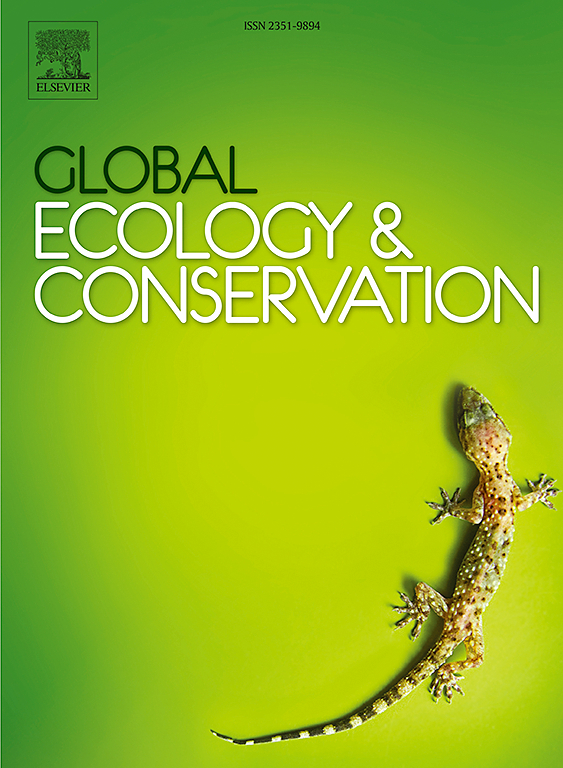Distribution pattern and composition difference of urban spontaneous plants of multi-mountainous city
IF 3.5
2区 环境科学与生态学
Q1 BIODIVERSITY CONSERVATION
引用次数: 0
Abstract
Rapid urbanization poses a threat to regional habitat maintenance and biological conservation, while spontaneous plants provide a beneficial opportunity for sustainable urban landscape and biodiversity conservation. However, it is still unclear how the patterns and composition of spontaneous plant diversity are affected by the urban environment. Here, spontaneous plants was investigated in the built-up area of Guiyang, capital city of southwest China to explore the diversity characteristics and distribution pattern, and the response of diversity and species composition difference of spontaneous plant to urban environment conditions by generalized linear model and generalized dissimilarity model. The results showed that: (1) The species richness and Shannon-Wiener index of spontaneous plants in the study area decreased with the increase of urbanization gradient, and there was no obvious urban-rural gradient pattern in the distribution of spontaneous plants; (2) Construction age, slope and land use Shannon diversity index were significant factors affecting alpha and beta diversity of spontaneous plant. In addition, species richness was significantly responsive to elevation and population change. (3) Environmental biological and abiotic factors were stronger drivers of alpha than beta diversity, and could explain 11 % and 15 % of the variation in species richness and Shannon-Wiener index, but only 5.9 % of the variation in Bray-Curtis index. These findings help to deepen our understanding of the community evolution and ecological processes of spontaneous plants in the process of urbanization, and have important implications for urban managers and planners to realize eco-friendly cities and urban rewilding practices.
求助全文
约1分钟内获得全文
求助全文
来源期刊

Global Ecology and Conservation
Agricultural and Biological Sciences-Ecology, Evolution, Behavior and Systematics
CiteScore
8.10
自引率
5.00%
发文量
346
审稿时长
83 days
期刊介绍:
Global Ecology and Conservation is a peer-reviewed, open-access journal covering all sub-disciplines of ecological and conservation science: from theory to practice, from molecules to ecosystems, from regional to global. The fields covered include: organismal, population, community, and ecosystem ecology; physiological, evolutionary, and behavioral ecology; and conservation science.
 求助内容:
求助内容: 应助结果提醒方式:
应助结果提醒方式:


